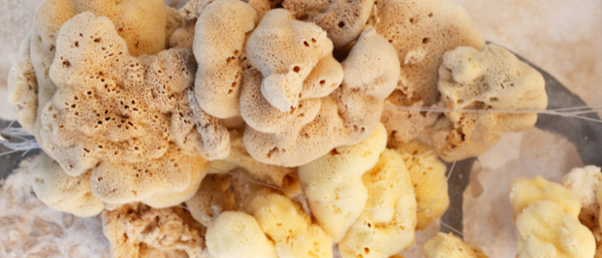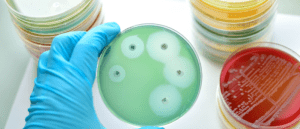The ultimate antibacterial sponge

Agelas dispar is a type of sea sponge that contains compounds capable of killing common drug-resistant bacteria and could lead to new antibiotics.
Researchers at the University of São Paulo (São Carlos, Brazil) have identified several compounds produced by a sea sponge that have antibacterial properties. In a world where antibiotic-resistant bacteria are a serious threat to public health, scientists are scouting all potential treatments.
Sea sponges are ancient organisms that attach to reefs and the seabed. Over millions of years, marine sponges have developed complex metabolisms to compete with fellow invertebrates and to protect themselves from pathogenic bacteria. This study examined Agelas dispar, a species of sponge found in the Caribbean and parts of the Brazilian coast.
Collected off the Northeast coast of Brazil on an archipelago called Fernando de Noronha, Agelas dispar was analyzed for therapeutic compounds. Lead author Vítor Freire explained, “we used next-generation techniques to analyze substances from its secondary metabolism, look for new molecules, and test its biological activity.”
 Two-step synthesis of antibacterial Schiff base complexes
Two-step synthesis of antibacterial Schiff base complexes
Researchers develop a 10-minute, two-step synthesis for amino acid Schiff base complexes using microwave irradiation.
The effects of thirteen bioactive compounds on ovarian cancer cells and drug-resistant bacteria were analyzed. The researchers found no anti-tumor effects of any of the compounds when interacting with cancer cells. Other studies confirmed that none of the compounds showed anti-tumor effects on cancerous lung, colon, breast or lymphoma cells.
The current study did demonstrate that three of the substances produced by Agelas dispar were able to kill bacteria that are resistant to current antibiotic treatments, such as Escherichia coli, Enterococcus faecalis, Staphylococcus aureus, Klebsiella pneumoniae, Acinetobacter baumannii and Pseudomonas aeruginosa. Further research tested whether these sponge compounds had adverse effects on red blood cells in the intestines; in murine cells, there was no damage to blood cells. This is promising, as current antibiotics destroy these red blood cells, and is a potentially fatal side effect in patients administered with antibiotics who are undergoing chemotherapy.
The antibiotic-resistant bacteria mentioned previously are responsible for most hospital-acquired infections. Therefore, the discovery of these antibacterial sea sponge compounds shows promise for developing novel and effective antibiotic treatments. Looking forward, the researchers hope to investigate other marine sponges. Freire suggested, “finding out how these substances are produced is extremely important as they’re distributed by several classes of sponge and could help treat diseases in future.”